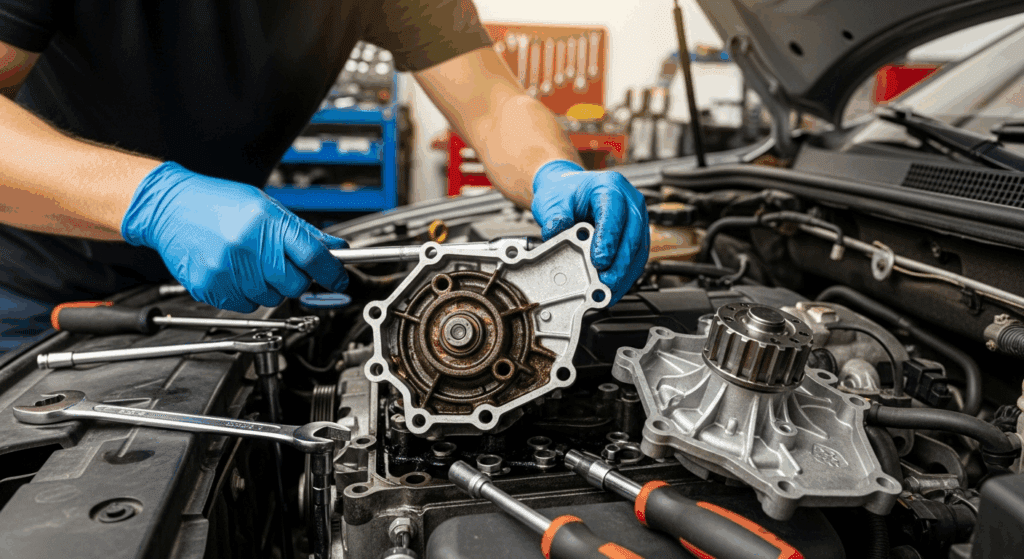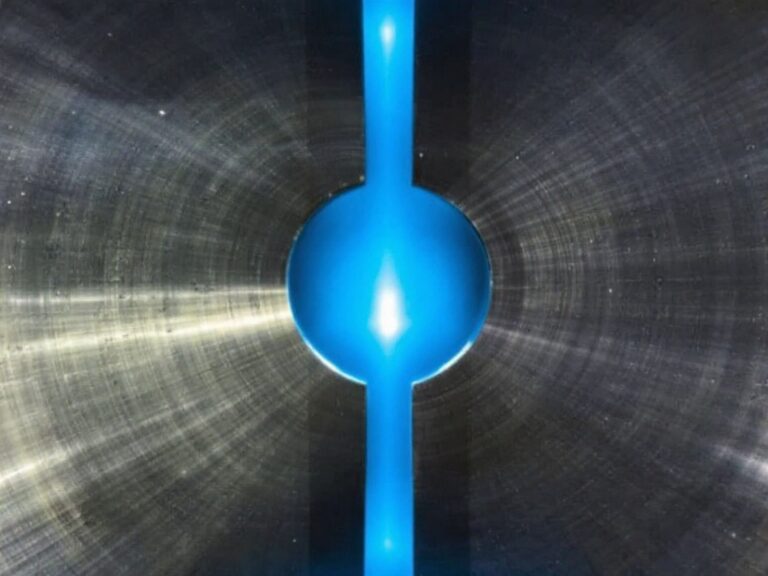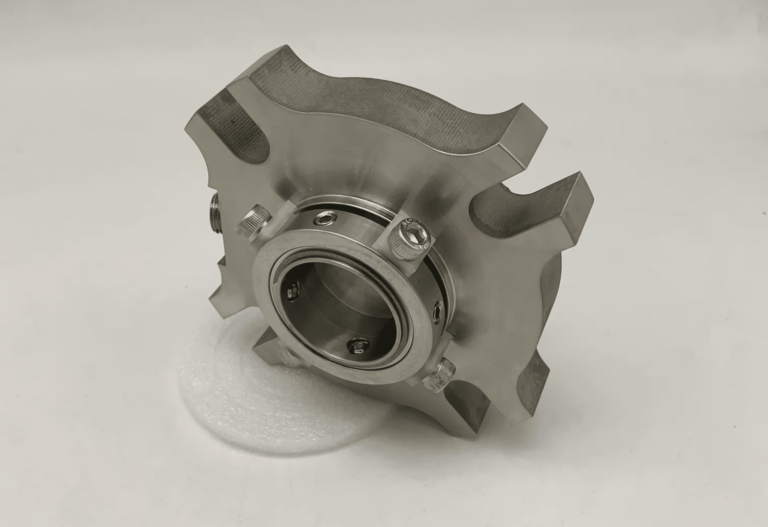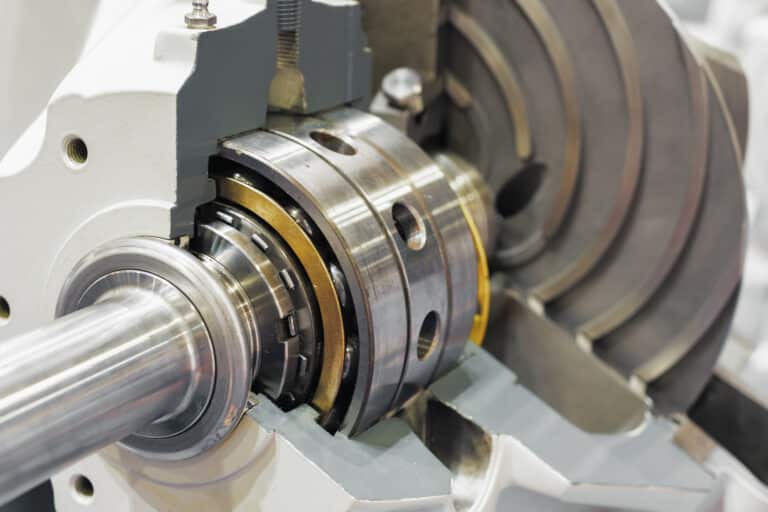Your car’s water pump is failing when you notice coolant leaks, engine overheating, unusual noises, steam from the radiator, or visible rust on the pump itself. These warning signs typically appear gradually, giving you time to address the problem before complete failure leaves you stranded.
Most water pumps last between 60,000 to 90,000 miles. But harsh driving conditions, poor maintenance, or manufacturing defects can cause earlier failure.

Coolant Leaks
Coolant puddles under your car are the most obvious sign of water pump failure. Look for bright green, orange, or pink fluid near the front of your engine after parking.
The water pump has internal seals that deteriorate over time. When these seals fail, coolant escapes through the weep hole—a small drainage port designed to alert you to seal failure.
Check your parking spot each morning before starting your car. Even small drips indicate the pump’s seals are compromised and replacement is needed soon.
You might also notice coolant on your garage floor that wasn’t there before. The leak often starts small—just a few drops—but gets progressively worse as the seal continues to fail.
Engine Overheating
Your temperature gauge climbing into the red zone means the water pump isn’t circulating coolant properly. This happens when the pump’s impeller (the spinning blade inside) breaks or wears down.
Pull over immediately if your temperature gauge spikes. Continuing to drive with an overheating engine can warp cylinder heads or crack the engine block—repairs that often exceed the car’s value.
Cars will display a temperature warning light when overheating begins. Don’t ignore this warning, even if the engine seems to be running normally.
The overheating might be intermittent at first. You’ll notice it mostly during stop-and-go traffic when airflow through the radiator is minimal.
Whining or Grinding Noises
A high-pitched whine from the front of your engine usually means the water pump bearing is failing. This noise gets louder as you accelerate and changes pitch with engine speed.
The bearing supports the pump’s spinning shaft. When it wears out, metal grinds against metal, creating that distinctive whining sound.
Grinding noises indicate advanced bearing failure. At this stage, the pump could seize completely at any moment, breaking the drive belt and disabling other engine accessories.
To pinpoint the source, have someone rev the engine while you listen near the water pump location. The noise will be loudest right at the pump.
Steam from the Radiator
Steam billowing from under your hood means coolant is boiling because the water pump has stopped circulating it. This is an emergency situation requiring immediate attention.
The steam appears when stationary coolant in the engine reaches its boiling point. Without circulation, hot spots develop quickly in the engine block.
Never open the radiator cap when you see steam. The pressurized coolant can cause severe burns. Wait at least 30 minutes after shutting off the engine before checking coolant levels.
If you see steam while driving, pull over safely and turn off the engine immediately. Call for a tow rather than trying to limp to a repair shop.
Water Pump Rust and Corrosion
Rust streaks or crusty deposits on the water pump housing signal advanced deterioration. These deposits form when small leaks allow coolant to evaporate, leaving behind mineral residue.
You’ll typically see rust trails running down from the pump toward the oil pan. The rust appears orange or reddish-brown against the aluminum engine components.
Corrosion weakens the pump housing and can cause sudden, catastrophic failure. Once visible corrosion appears, the pump typically fails within a few thousand miles.
Check for rust during oil changes when you have good visibility of the pump area. Use a flashlight to inspect hard-to-see surfaces behind belts and hoses.
The corrosion often starts where the pump mounts to the engine block. This junction experiences the most stress from vibration and thermal expansion.
FAQs
How much does a water pump replacement cost?
Water pump replacement typically costs between $300 and $750, depending on your car model. Labor accounts for most of this cost since accessing the pump often requires removing multiple components.
Can I drive with a bad water pump?
No, driving with a failing water pump risks severe engine damage from overheating. If you must drive, go no more than a few miles to reach safety, monitoring temperature constantly.
Can a water pump fail suddenly without warning?
Yes, catastrophic failure can occur without warning if the impeller breaks or bearing seizes. However, most pumps show gradual symptoms like small leaks or noise before complete failure.
Should I replace the thermostat when changing the water pump?
Yes, it’s smart to replace the thermostat during water pump service. The thermostat is inexpensive, and replacing both prevents having to drain the cooling system twice.
What causes water pump failure?
Water pumps fail from worn bearings, deteriorated seals, corroded impellers, or contaminated coolant. Using the wrong coolant type or neglecting coolant changes accelerates pump wear.




